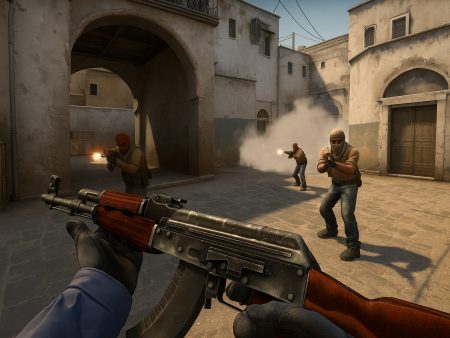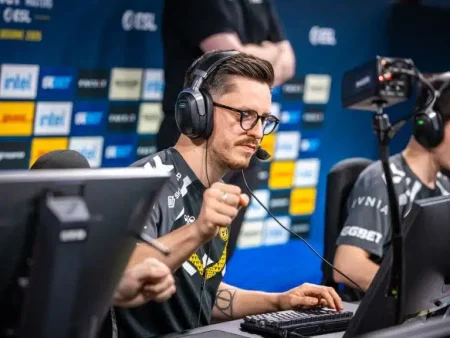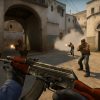Discover the best boost spots and off-angles in CS2 to surprise your opponents, win more duels, and outsmart enemy teams. Master positioning, timing, and pro strategies with this ultimate guide.
Boost spots in Counter-Strike 2 (CS2) are locations where one or more teammates work together to elevate a player to an unusual, often inaccessible position. These spots can grant a superior line of sight, an unexpected angle, or a one-way view into an area enemies wouldn’t typically pre-aim. Boosts are an essential tactical element that adds verticality and creativity to the game, often catching opponents off guard and leading to easy kills or crucial information.
Take, for instance, the classic mid-window boost on Mirage. While it’s a commonly known trick, it still works because it alters the engagement angle. Opponents who aren’t clearing it properly or are too focused on connector will get picked off without knowing what hit them. Boosts like these aren’t just gimmicks—they’re deeply strategic, often giving defenders or attackers a serious edge when used intelligently.
More advanced boosts involve stacking on less obvious terrain or exploiting the unique collision models and physics of the Source 2 engine. CS2’s updated mechanics also allow for smoother movement, making previously tricky boosts more viable for a wider range of players.
So, why do boosts matter? Because they disrupt the expected flow of gameplay. CS2, like all tactical shooters, thrives on rhythm. Once you interrupt that rhythm—by peeking from a vertical angle or seeing someone through a pixel gap from a boost—you take control of the round. And in CS, control is everything.
Understanding Off-Angles and Their Purpose
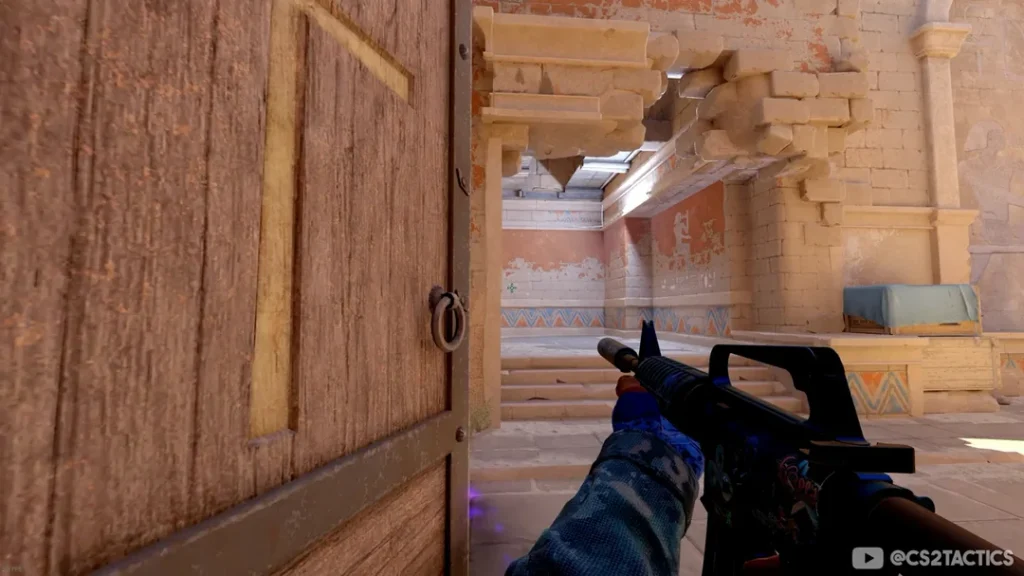
An off-angle is essentially any position where a player holds a line of sight that differs from where opponents typically pre-aim or expect. Think of it as the “weird spot” that’s off to the side, higher up, or lower down than the standard corners or boxes people usually check.
The key to an off-angle is unpredictability. When you peek mid on Dust2 from CT, opponents generally pre-aim the standard boxes or doors. But if you’re crouched behind a tucked corner or holding from the very edge of a wall—an unusual angle—they have to adjust, and often, that split-second difference is enough for you to win the duel.
In CS2, where time-to-kill is incredibly short and every pixel counts, off-angles become deadly tools. They force the enemy to second-guess themselves, adjust their crosshair mid-fight, or even panic and spray wildly. An effective off-angle punishes lazy clears and rewards smart positioning.
But not every off-angle is good. Some are too exposed, others compromise your escape, and a few only work once. The key is variation. Use off-angles sparingly and intelligently, rotating them across rounds and incorporating them into your overall strategy.
Why These Spots Matter in Competitive Play
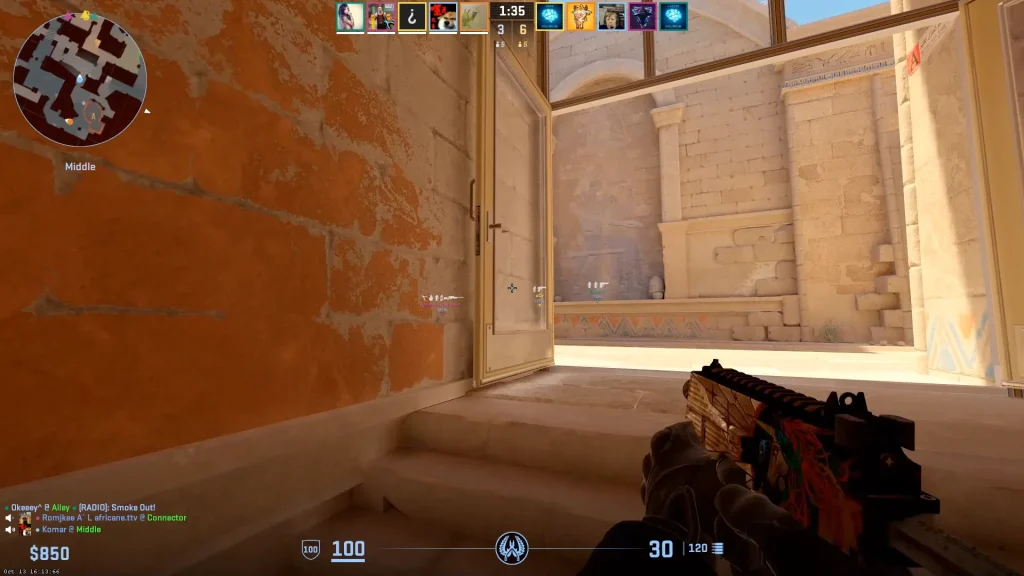
Boost spots and off-angles aren’t just flashy tricks—they’re foundational elements of high-level CS2 play. Whether you’re grinding your way through matchmaking, queuing up in FACEIT, or competing in actual tournaments, these tactics can elevate your game in more ways than one.
First, they break predictability. In CS2, most players follow patterns. They push certain positions at set times, clear corners based on habit, and hold angles expecting the usual. By throwing a boost or an off-angle into the mix, you disrupt those patterns and force opponents to adapt, often uncomfortably.
Second, they’re efficient. With a good boost, two players can control a chokepoint while maintaining safer positioning. With a good off-angle, one player can control an area without relying on utility or support. It’s about making the most of your resources—people, position, and time.
Third, they help with info gathering. Boosts, in particular, offer unusual sightlines, letting you see things before your opponents see you. This information advantage can be round-defining, especially if you spot a rotation early or catch a lurker.
Lastly, let’s talk mental game. When an opponent dies to a boost or off-angle, they often tilt. It messes with their confidence, causes hesitation in their clears, and sometimes leads to erratic gameplay. If you can throw them off even slightly, you’ve gained a psychological edge—and in a game like CS2, that’s just as valuable as raw aim.
The Science Behind Surprise and Positioning

Human Reaction Time and Visual Processing
Understanding how human brains process visual information and react under pressure is crucial to using boosts and off-angles effectively. In fast-paced games like CS2, the average human reaction time is around 200-250 milliseconds. That’s less than a quarter of a second—but in a game where milliseconds determine life or death, it’s everything.
When you position yourself in an off-angle or a boost, you’re capitalizing on your opponent’s limited field of view and muscle memory. Most players develop habits over time: they aim at common spots because their brains are trained to expect threats there. But when you appear in a spot they weren’t prepared for, that delay—the time it takes their brain to register “enemy” and translate it into a flick—is often too slow.
Add to that the complexity of map design, lighting, shadows, and player models blending into the environment, and it becomes even harder for the opponent to respond quickly. Boosts and off-angles exploit the narrow cone of vision and limited time players have to react. It’s not just a positioning advantage—it’s a neurological one.
In CS2, Valve’s new lighting engine and improved visibility systems also play a role. The changes in color palettes, environmental clutter, and movement smoothness affect how easily you can be seen—or hidden. Smart players take advantage of that, choosing off-angles where they blend into backgrounds or using boosts to place themselves in shadows or above the line of sight.
Psychological Pressure of Unexpected Angles
Ever died to a weird off-angle and found yourself fuming? That’s the psychological edge at work. The emotional toll of unexpected deaths causes players to doubt themselves, hesitate, or overcorrect. This is especially true in back-to-back rounds, where dying to the same trick twice can completely throw someone off their game.
Surprise isn’t just about reaction time—it’s about confidence. When your enemy loses faith in their crosshair placement or starts second-guessing their clears, their performance drops. That mental fragility is something top-tier players exploit all the time, not just with raw aim but with sneaky positioning.
Breaking Common Crosshair Placement
Crosshair placement is the holy grail of consistent aim. Every coach, guide, and pro will tell you to keep your crosshair at head level and aimed at where enemies usually appear. But boosts and off-angles? They throw all that out the window.
By placing yourself slightly above, below, or to the side of common peeking spots, you create a mismatch between where the enemy is aiming and where you are. This forces flicks, uncomfortable adjustments, or—best case scenario—completely missed shots.
It’s like stepping out of rhythm in a dance: your opponent’s muscle memory is trained for the beat, and you’re hitting the off-note. That split-second misstep? That’s your kill window.
Best Boost Spots on Popular Maps

Mirage
Mirage is one of the most boost-friendly maps in CS2, thanks to its open mid area, tall boxes, and multiple elevated positions. Players familiar with Mirage often know the standard angles, but clever boost spots can turn the tide of any round.
Window Boost from Mid
This is a textbook boost in Mirage but remains one of the most effective. From Mid, a teammate can crouch near the window ledge, allowing the second player to jump up into Window without needing to go through Connector or use the catwalk. This is not only faster but also offers a surprise peek into top mid or underpass before enemies expect it.
A well-timed window boost at the start of the round can give the CT side a massive information advantage. It’s particularly deadly when an AWP player gets there early and holds the angle toward T spawn or underpass, punishing any T-side player trying to grab mid control.
The key here is speed and coordination. If you’re slow, enemies may already be in position, and your boost becomes a liability. Use spawn timings to your advantage—if you or a teammate get the closest CT spawn, prioritize this boost early in the round.
B Site Van Boost
The van on B site allows for a sneaky one-way style hold. With a teammate’s help or a clever jump from the bench, a player can get on top of the van and hold a tight off-angle toward apartments. From this position, the boosted player can peek over the van and catch enemies entering from apps completely off-guard.
This spot is perfect for punishing early B hits. It’s especially effective if combined with a molly or smoke that makes the area below appear clear—giving the illusion the site is uncontested. Remember, though: this angle can be checked if overused. Mix it up to keep your opponents guessing.
Inferno
Inferno may feel like a tight and linear map, but it has excellent boost potential—especially in high-traffic areas like Banana and Pit. These boosts can be game-changers if used with precision and timing.
Boost on Banana Sandbags
The sandbags on Banana are already a popular holding spot, but boosting a teammate on top of them creates a deadly one-way angle. From this elevated position, a CT can see over the half-wall and into Banana far more effectively than from ground level.
This spot is a nightmare for T-side players trying to take Banana control. Their crosshair will typically be aimed lower, around the corner or at the sandbags themselves. Being slightly elevated throws off their aim, giving you the first-shot advantage.
To maximize this spot, pair it with utility. Throw a smoke down at the bottom of Banana to suggest you’re falling back, then silently boost and wait for the T-side to walk through. It’s a perfect trap—and when executed well, it can stop a B push dead in its tracks.
Pit Boost for A Long
A rarely seen but powerful boost involves stacking in Pit on A site. A CT crouching in the lower part of Pit can lift a teammate onto the railing or flowerbed, giving them a pixel angle onto Long or even toward Apartments, depending on how you stand.
This is great in post-plant scenarios or anti-eco rounds. It offers a nearly invisible angle and can be the difference between a clean A hold or losing site control. Just make sure to communicate clearly—falling off mid-boost is not only frustrating but can give away your position.
Overpass
Overpass is infamous for its vertical map layout and long sightlines, making it ideal for creative boost spots that cover large areas or offer unique peeks.
B Site Heaven Boost
From the pillar area below Heaven on B site, a teammate can help you onto the railing, giving a boosted player an extremely tight angle into Monster or even short pipe. This elevated peek often goes unchecked because players entering B from Monster typically pre-aim barrels or graffiti—not Heaven.
The spot is amazing with a scoped rifle like the AUG or AWP. The increased height lets you hold a tighter pixel gap, and enemies trying to entry B will be caught off guard—especially if they’ve already cleared site and think it’s empty.
It’s not easy to pull off under pressure, so it’s best used during pre-round setups or after early round aggression has been shut down. Once you’re up there, don’t repeat the angle every round—it loses effectiveness if expected.
Flowers Boost on A Site
Near the flower beds just outside of the A site, a sneaky boost can be set up by jumping on your teammate’s head. From this elevated spot, you gain a perfect line of sight over the benches and into Bathrooms or mid.
The key to using this spot is to stay still. Movement makes your silhouette obvious, but staying crouched and scoped can turn you nearly invisible, especially against players rushing up long without checking high angles.
When paired with a bait setup—say, a teammate peeking Divider—this Flowers boost becomes deadly. You’re not only hitting from an off-angle but turning their attention away from a secondary threat.
Nuke
Nuke is the king of vertical combat in CS2. With its layered map design and indoor/outdoor contrasts, boost spots can truly shine.
Outside Boxes Boost
Outside of Nuke, there are multiple boxes and crates leading toward Secret and Heaven. With good timing, a teammate can boost you on top of the red container, granting vision all the way toward T Red, Garage, or even Silo.
This position is incredible for picking off crossing Ts who aren’t expecting someone to be aiming from the top of a box. Use it early in rounds to catch those rushing outside, especially during full buys when they try to smoke-cross.
Pro tip: Combine it with an outside smoke wall—your enemies will assume you’re hidden, but you’re actually above it all, watching them run by like sitting ducks.
Secret Off-Angle from Rafters
Inside Nuke, particularly on the B site, boosting onto the rafters near Secret allows for nasty off-angles. From this high position, you can catch players trying to plant, rotate, or push decon. The elevation messes with enemy crosshair placement and gives you a huge advantage in 1vX situations.
This position is best used during post-plant scenarios or when anchoring B solo. Play it smart, don’t overpeek, and always have an escape route if you’re discovered. The element of surprise is everything.
Powerful Off-Angles That Catch Enemies Off Guard
What Makes an Angle “Off”?
In CS2, an “off-angle” is any position that deviates from the conventional or expected lines of sight. It’s not just a weird place to stand—it’s a calculated decision to disrupt your enemy’s pre-aim and muscle memory. The defining trait of an off-angle is that it forces the opponent to adjust mid-fight, often making the difference between landing the headshot and getting instantly deleted.
What separates a good off-angle from a bad one is context. A strong off-angle:
- Forces a difficult flick from the enemy
- Provides you first-contact advantage
- Allows a safe retreat or cover after engagement
- Takes advantage of lighting, props, or map geometry
On the flip side, a poor off-angle:
- Exposes too much of your body
- Is overly aggressive with no fallback
- Leaves you isolated from teammates
- Can be wall-banged or spammed easily
Timing and awareness are crucial. Use off-angles during eco rounds, or when you know the enemy is low on utility. When properly utilized, they allow you to turn even a 1v2 into a winnable situation simply by being where you’re not expected.
Top Off-Angles by Map
Let’s dive into specific maps and showcase some of the dirtiest, most effective off-angles that’ll give your enemies nightmares.
Dust2 – Tunnels Off-Angle Behind Boxes
Inside B tunnels, one underrated off-angle involves crouching behind the small box near upper tunnels exit. It offers a tight angle toward lower tunnels and mid doors. Most Ts rushing B are pre-aiming window or door—they rarely clear that close box, and when they do, their crosshair is usually too high.
This off-angle is especially deadly with a silenced M4A1-S. The audio confusion adds to the panic. Combine it with a baiting teammate who makes noise on site while you lurk silently behind the box. The result? A slaughter before the plant even begins.
Ancient – A Site Off-Angle by Cave
Ancient’s unique geometry lends itself to off-angles galore. One of the most effective is right outside Cave, hugging the right wall with your back toward Temple. This spot lets you hold an ultra-tight peek into A main, and your position is so tucked in that Ts will often overlook it entirely.
Because Ancient has relatively new map dynamics, many players still follow standard entry paths. This means a good off-angle here can get multiple kills in quick succession, especially in anti-eco rounds. Bonus tip: throw a smoke deeper into A main to encourage a push, then punish them from your tucked position.
Vertigo – A Ramp Side Peek
A Ramp on Vertigo is hot territory for early round fights. But instead of taking the usual headshot angle behind sandbags or scaffold, try this: hug the left wall of A ramp, crouched behind the small block just before the corner. From here, you can peek left into the ramp where Ts push up—but from an angle they almost never pre-aim.
This peek is difficult for Ts because their crosshair is usually higher, expecting scaffolding or default. When you crouch peek from the side, you introduce a vertical and lateral crosshair adjustment. This kind of disruption is exactly why off-angles work so well.
When and How to Use These Spots Effectively
Ideal Rounds for Boosts and Off-Angles
Timing is everything. Not every round is the right moment to pull out a sneaky off-angle or elaborate boost. The best times to use them include:
- Eco or Force Buy Rounds: When you’re at a firepower disadvantage, positioning is your weapon. A well-placed off-angle can net you a rifle and completely shift momentum.
- After Losing a Round: Change your setup. If enemies just stormed your site last round, hit them with a surprise boost or a new angle. CS2 is all about adaptation, and your positioning should reflect that.
- Against Predictable Teams or Players: If you know a team takes mid every round or a certain player always peeks long on Inferno, set up a counter with an unexpected spot.
- Mid-Round Lurk Situations: Boosting a teammate into an overlooked position during a slow round can pay off with valuable information or a sneaky flank.
Off-angles are high-reward but high-risk. Don’t become the guy who sits in the same spot every round. Use these positions sparingly and rotate your playstyle to keep the enemy guessing.
Communication and Timing in Team Play
Solo queue players often ignore boost spots because they assume randoms won’t cooperate. But if you’re playing with friends or on a team, coordinated boosts can turn into round-winning plays.
Here’s how to execute them right:
- Communicate Early: Don’t wait until the round starts. Plan your boost during freeze time and call out positions clearly.
- Utilize Spawn Advantage: If a teammate has a forward spawn, use that to execute a fast boost and get into position before enemies arrive.
- Don’t Overcommit: If a boost doesn’t go off cleanly within the first 5-10 seconds, abort. Staying too long can leave you vulnerable.
- Have a Plan for the Booster: Make sure the bottom player isn’t just bait. Give them a follow-up task—like holding a separate angle or falling back safely.
Good communication transforms a gimmick into a strategy. The better your team coordinates boosts and off-angles, the more pressure you’ll apply to the enemy.
Risks vs. Rewards: When It’s Not Worth It
Boosts and off-angles aren’t magic bullets. If overused or poorly timed, they can become liabilities. Here’s when not to use them:
- Against Teams with Great Utility Usage: Smokes, flashes, and molotovs ruin most boosts and expose off-angles. If you’re playing against a team that clears methodically, reconsider your spot.
- Late-Round Clutches: If you’re in a 1v1 or 1v2, positioning is still key—but an off-angle with no escape can get you caught off guard. Stick to spots where you have info and mobility.
- After Getting Spammed or Pre-Fired: Once an angle is exposed, ditch it. Even the best off-angles only work once or twice per half. Repeating them makes you easy to predict.
Remember: surprise is your weapon. Once it’s gone, you need to adapt.
Mastering Boost Mechanics in CS2
Physics and Movement in Source 2 Engine
CS2’s move to the Source 2 engine didn’t just improve visuals—it changed the movement physics, jump mechanics, and collision detection. These changes directly impact how boosts work, how consistent they are, and which ones are even possible anymore.
Compared to CS:GO, players will notice smoother movement transitions and slightly more forgiving jump crouch mechanics in CS2. This means certain difficult boosts that previously required perfect timing are now easier to execute with a bit of practice. Additionally, the hitbox and clipping models have improved, allowing for more consistent stacking of players without weird slippage or janky bumps.
Mastering these mechanics gives you a leg up. You need to understand how:
- Jump crouch functions in tight spaces
- Momentum-based jumps can be used to reach higher ledges
- Angles and headroom affect the boost execution
Practicing these in custom games is essential. Knowing the exact alignment and timing makes a difference between a game-winning position and a failed attempt that gets both players killed.
Practicing Boosts in Custom Games
Want to turn boost spots into muscle memory? Then you’ve got to put in the reps—just like aim training. Load up a private server or use workshop maps specifically designed for movement and boosting practice.
Here’s a solid routine to follow:
- Use
sv_cheats 1andnoclipto position yourself and teammates. - Set up common boosts on maps like Mirage (window, van), Inferno (sandbags, pit), and Overpass (heaven, flowers).
- Repeat the movement until you can do it 10 times in a row with no mistakes.
- Practice communication cues—“jump now,” “hold crouch,” “move left slightly”—so you can execute smoothly in real matches.
Workshop maps like “Yprac Practice and Boosting Map” or “Training Center 1.5” offer excellent setups to drill these spots. Don’t wait for real matches to figure it out. Practice ahead of time and pull them out mid-game like a pro.
Creative Boosts with Teammates
Boosts aren’t just about stacking for elevation—they’re about thinking outside the box. With the Source 2 engine allowing smoother movement and less clipping, CS2 is ripe for discovering new boost spots that haven’t been widely used yet.
Encourage your team to experiment. Try:
- Stacking in off-meta locations to catch rotating enemies
- Boosting during post-plant holds to get off-angles on defuse spots
- Using mid-round boosts after map control is taken to surprise lurkers or rotators
Some of the most iconic plays in CS history came from innovative boosts—remember Fnatic’s infamous Olofboost on Overpass? You never know when your team’s creativity could lead to the next meta-defining strategy.
Common Mistakes Players Make with Boosts and Off-Angles
Overusing the Same Spot
It’s the biggest trap players fall into: you get one good round from an off-angle or boost, so you keep using it again and again. Unfortunately, even Gold Nova players are quick to catch on. The second time might work, but by the third, you’re pre-fired, molotoved, and in the death cam wondering what went wrong.
CS2 is a game of adaptation. You need to stay ahead of your enemies’ memory. Good players expect you to repeat spots—great players punish you for it.
Fix it by:
- Rotating positions every 2–3 rounds
- Only repeating spots if enemies haven’t seen it
- Swapping sides—if you used a boost on A site, do one on B next time
Poor Crosshair Placement
Even the best boost or angle is useless if your crosshair is in the wrong place. A lot of players fall into the trap of focusing so much on positioning that they forget fundamentals.
When using off-angles, adjust your crosshair not to where enemies are most visible—but where their heads will be when they peek into your angle. Because you’re playing an unexpected spot, their path will differ from the usual, and you need to track those slight deviations.
Use utility like blood decals from previous fights or pre-aimed peeks in practice to judge where heads are likely to appear.
Lack of Map Control Awareness
Boosts and off-angles are not a substitute for actual map control. If you’re sitting in a sneaky spot while your team has no info on the rest of the map, you’re basically gambling.
A successful off-angle relies on:
- Teammates holding common lines
- Utility to delay pushes or mask noise
- Rotational awareness—knowing when to fall back or peek
Don’t isolate yourself too early in the round. Time your boost or angle when you have info on where enemies are likely coming from. Otherwise, you risk becoming the last man standing with no clue where the push is coming from.
How Pro Players Use Boost Spots in Tournaments
Famous Boost Plays in CS2
Since CS2’s launch, pro players have already started adapting classic boost strategies and inventing new ones. One of the most talked-about moments came from a match on Mirage, where a pro team used a double-stack boost on Catwalk to catch a top mid AWPer completely off-guard—twice in one match.
Then there was the Overpass B site Heaven boost, executed by Heroic in a critical round. They baited utility at barrels, then revealed the boost for a clean double kill from above. Commentators lost their minds, and the clip went viral.
These moments aren’t just for style points. They win rounds and force opponents to play more cautiously.
Studying Pro Demos for Positioning
If you want to integrate boosts and off-angles into your own play, start watching pro demos with a different lens. Don’t just watch for aim and utility—pay attention to positioning.
Look for:
- Early-round setups
- Uncommon angles players use on force-buys
- Where CTs go after losing early picks
The best part? Most players copy utility lineups from pros, but not positioning. That gives you a unique edge. Use platforms like HLTV or demo viewers to slow down the action and dissect the movement behind each setup.
Adapting Pro Spots into PUGs
Let’s be real—your average FACEIT or matchmaking pug isn’t full of strat-executing, comms-heavy teammates. So how do you translate pro-level spots into that chaotic environment?
Simple:
- Pick low-risk, high-reward boosts that don’t rely on full team setups
- Use off-angles in anchor positions where you can solo hold
- Communicate boosts in freeze time with quick phrases like “jump me van B” or “stack pit this round”
Don’t try to copy full executes. Instead, take the concept behind pro plays—unexpected positioning—and use it in ways that fit your solo queue or duo playstyle.
Tools and Resources to Learn More
CS2 Workshop Maps
One of the most underutilized tools for mastering boosts and off-angles is the Steam Workshop. There are dozens of maps created by the community specifically for learning movement, boosts, and positioning. These maps remove distractions and let you practice raw mechanics until they’re muscle memory.
Some recommended Workshop maps:
- Yprac Map Series – Offers detailed boost and positioning drills for every competitive map.
- Training Center 1.5 – Great for refining movement, jump throws, and stack coordination.
- Recoil Master – While not for boosting directly, it’s perfect for working on control while holding weird angles.
These tools are free, updated frequently, and used by pros and streamers alike. No excuse not to use them.
YouTube and Streamer Tutorials
There’s a massive amount of CS2 content available online. From in-depth map guides to breakdowns of pro boosts, YouTube is a goldmine of strategic insight. Some top content creators to follow include:
- fl0m – Covers tactical plays and off-meta spots in a highly digestible way.
- 3kliksphilip – Known for deep-dive analysis and map geometry breakdowns.
- WarOwl – Offers educational and entertaining guides, often focusing on positioning and timing.
Watch streamers and pay attention to the unusual places they hold from. Many high-rank players use spots you wouldn’t think of, simply because they’ve learned how to abuse line-of-sight and sound.
Community Forums and Discords
Want to really sharpen your game? Engage with the CS2 community. Reddit threads, Discord servers, and FACEIT forums are constantly buzzing with discussion about boost spots, angles, and new map exploits.
Places to join:
- r/GlobalOffensive on Reddit
- CS2 Strategy Discords
- Map-specific communities like Mirage-only or Nuke Masters
Don’t just consume—participate. Share a clip of your off-angle triple kill or ask for advice on improving a specific setup. The best players are always learning and adjusting.
Conclusion
Boost spots and off-angles in CS2 are more than flashy tricks—they’re tactical power plays that can win rounds, disrupt enemy momentum, and elevate your gameplay to the next level. Whether you’re holding a sneaky off-angle near A ramp on Vertigo or coordinating a cheeky window boost on Mirage, the key is to remain unpredictable, calculated, and in control.
In a game where milliseconds decide the victor, smart positioning is a silent killer. It’s what separates average players from game-changers. By mastering boost mechanics, studying pro strats, and refining your use of surprise angles, you build an arsenal of options that can shift entire halves in your favor.
But remember: these tools work best when used sparingly and creatively. Don’t rely on the same spot every round—adapt, rotate, and always be one step ahead.
So get out there. Practice your boosts. Find new angles. Surprise your opponents.
And most importantly—have fun doing it.
FAQs
What’s the difference between an off-angle and a jiggle peek?
An off-angle is a static, unusual position used to catch enemies off-guard, while a jiggle peek is a movement tactic used to bait out shots or gather information without committing. Off-angles rely on surprise; jiggle peeking relies on timing and baiting.
Are off-angles still useful in higher ranks like Global Elite?
Absolutely. In fact, they’re more useful at higher ranks when everyone knows the standard angles. A well-placed off-angle can surprise even the most experienced players if used sparingly and at the right moment.
What’s the most underrated boost in CS2 right now?
The Overpass Heaven boost on B site is extremely underrated. It provides insane vision into Monster and Short and is rarely checked if you haven’t used it yet in a match.
How do I practice boost spots solo?
Load into a private lobby with bots, enable sv_cheats 1, and use bot_place to position a teammate for boosts. You can also use jump-boosting practice maps on the Steam Workshop to drill mechanics solo.
Do pros use off-angles regularly or only in special situations?
Pros use off-angles frequently—but they rotate them. They rarely use the same angle more than once or twice in a match, and they often pair them with bait setups or utility to make them more effective.
